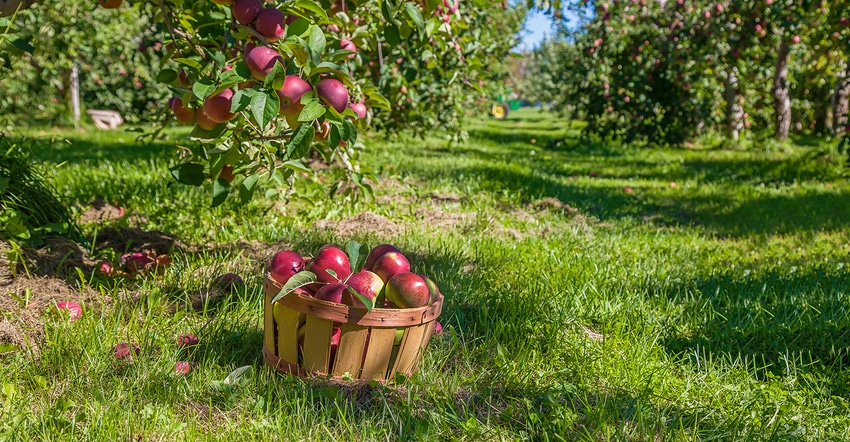July 5, 2019

By Kaitlyn Lance
It is crazy how fast summer seems to go; one minute you are planting, and the next thing you know, it is time to pick blueberries or harvest tomatoes, cantaloupes and cucumbers.
As much as I love spring, I think harvesttime is my favorite season of the year. It is also one of the busiest times as farmers try to get their produce out to consumers. Sometimes when we get busy, we allow some of our best management practices to fall by the wayside. Let’s talk about a few practices to keep both you and the consumer safe during harvest.
If you have attended a produce safety grower training or have gone through GAP certification, you may have heard of these practices and are already implementing them on the farm, but reminders can’t hurt. Before I begin, I want to stress this is not an end-all, be-all list, so if you have questions, feel free to reach out to your local Extension educator to talk more about safety during harvest, produce safety grower training or GAP certification. GAP stands for good agricultural practices. This article will cover practices that would be used whether you harvest produce that is generally consumed raw or if your produce goes through a processing step.
Safety in the field
Working in agriculture comes with a lot of risks. When it comes time to harvest in the field, you might not assess for risk, and by the time you realize something is wrong, it might be too late.
Equipment should be inspected for damage or other issues before being used. Most people have standard operating procedures in place for their equipment, but if you don’t, consider creating some. It’s a good practice to review standard operating procedures with employees annually or when you bring new people on to help.
Temperature can be a huge issue during harvest. Though it is starting to cool off at that time of year, there can still be some pretty hot days. Those working in the field should have access to water and shade. It doesn’t take long for heat exhaustion or heat stroke to settle in.
Having designated equipment for harvesting can aid in reducing the spread of pathogens such as E. coli. If equipment must be used for multiple tasks, have a cleaning and sanitizing procedure in place to reduce the spread of pathogens.
With produce that is consumed raw, there is a higher risk of microbial pathogens (E. coli, salmonella, etc.). To reduce that risk if you are packing outdoors, keep crates free of soil and other debris. Using specific tools and equipment for the task can also reduce risk. If you are using a truck bed for crates, make sure the bed can be cleaned and sanitized between uses.
Chemical risks
There are several chemical hazards a farmer can come in contact with on the farm, such as pesticides, detergents and sanitizers. Should a spill occur or someone come in contact with a chemical, it is important to have an emergency action plan in place.
One way to reduce chemical hazards is to keep them locked up and stored in an area away from where you pack or store produce. Having a designated area that is well labeled can minimize accidents. Having Safety Data Sheets (SDS) available will help employees and you understand the risks and take action should an accident occur.
If you are handling produce on the farm and are using food-grade chemicals, it is important to read the label and use those chemicals as directed. If chemicals are mishandled, that can lead to serious injury or even contamination of your product.
Physical safety
Microbes and chemicals are not the only safety risks that need to be evaluated. There are several physical risks, as well.
Understanding how much you can lift, and how to lift heavy objects, can reduce back injuries. If something is too heavy for you to lift on your own, seek out equipment or another person to assist you.
Another physical risk includes working around machinery. Things eventually break down, and most of the time it is up to the farmer to find a way to fix it. When this is during harvesttime, it can be very stressful. When a person gets stressed, he or she might rush through a task, which can lead to injury or death. It is important to take a few moments and assess your stress level and ability to complete the task at hand.
When working with produce and packing houses, objects such as wood, metal, glass or plastic can sometimes end up in produce. Ways to reduce those physical risks include making sure light fixtures are covered or shatterproof. Replace old wooden equipment — this does not need to all happen at once but can happen in multiple steps. Cover already packed containers so there is limited risk of objects falling in. As mentioned earlier, be aware of the equipment you are using and replace units that are too warn or broken.
You may not be able to control the price you get for your commodities or the weather, but you can control how much risk you place on yourself and those who farm alongside you. This is not an extensive list but just a few snapshots of ways you can reduce risk during harvest. For more information, please reach out to your local Extension educator.
Lance is the agriculture Extension educator in La Crosse County, Wis.
You May Also Like




